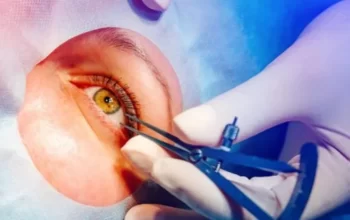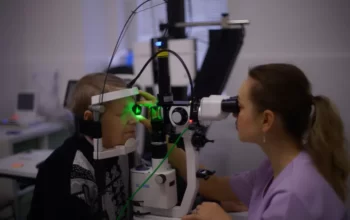
Your eye’s lens has a cloudy spot in it. Your vision may become hazy, blurry, or cloudy, and colors may appear faded. You may also become more light-sensitive or experience difficulty seeing at night if you have a cataract. Around age 40, they typically start to form as a result of the breakdown of lens proteins. Although most people don’t notice any changes in their vision until after the age of 60, sometimes they can grow more quickly and cause problems earlier.
What Is Cataract Operation
After cataract surgery, patients were asked to rate their visual experience as either pleasant, neutral, or unpleasant. The 200 patients who were interviewed for the study were a nearly equal mix of men and women around the age of 70. As is to be expected, they were a little nervous before the surgery and were given an oral tablet to help them relax. The most common color combination was red-blue light, which was probably coming from the operating microscope. They all claimed to have seen some variation in color, including blue, red, pink, yellow, green, purple, turquoise, and orange in that order. The majority (61%) of patients’ experiences with light and color during surgery were described as pleasant, 38% as neutral, and 1% as unpleasant. Overall, the experience of light and color during cataract surgery is mildly pleasant, and patients should be reassured that the visual experience is actually a little bit calming and relaxing.
What Can I See While Having Cataract Surgery?
Before Cataract Surgery
Your vision becomes cloudy and the color vibrancy decreases prior to cataract surgery if you have cataracts. Cataracts may grow larger if left untreated, impairing vision and eventually resulting in blindness. Wearing glasses no longer improves your vision because cataracts cloud your eye’s internal lens.
It can be annoying or even terrifying to lose your vision. However, with today’s sophisticated laser technology and the skill of our knowledgeable ophthalmologists at Beverly Hills Institute of Ophthalmology, removing cataracts from your eye and replacing your lens with a new, clear one is an in-office procedure that is both quick and successful.

During Cataract Surgery
We numb your eye with a local anesthetic during surgery so you won’t feel a thing. Despite being awake, you won’t be able to see what is happening to your eye during surgery. At the Beverly Hills Institute of Ophthalmology, our ophthalmologists use a cutting-edge femtosecond laser to perform cataract surgery.
The cataract and your natural lens are first emulsified using ultrasound after a small incision is made in your eye with a laser close to the edge of your cornea. Through the small incision, we remove the old, emulsified intraocular lens and replace it with the new, transparent one. It takes about 15 minutes to complete this part of the procedure, but you’ll need to stay in the office longer to get your eye ready for surgery and for a short recovery period afterward.
After Cataract Surgery
Once your new IOL is in place, it becomes an indelible component of your eye and offers long-term vision improvement. Make plans for a friend or relative to drive you home because you won’t be able to drive right away.
As your eye adjusts to your new lens and recovers from surgery, your vision may initially be blurry. Since cataracts usually make colors appear dim and dingy, colors may seem brighter right after surgery. A few days after cataract surgery, you’ll come in for an eye exam so we can keep track of your recovery.
Your eye may feel scratchy or irritated in the days immediately following surgery, but that’s completely normal. For a few nights, you might need to sleep with a shield covering your eye. You’ll apply eye drops as directed by your doctor, and you should take care not to rub your eye or engage in any strenuous activities for about a week.
You May Be A Good Candidate For Cataract Surgery
You could benefit from cataract surgery if you have any of the following vision issues:
- Clouded or blurred vision
- Sensitivity to light
- Difficulty reading or watching TV
- Dim, dingy appearance of colors
We’ll conduct a thorough eye examination, talk about your general health, and assess the number, size, and location of your cataracts to get you ready. In order to choose the best intraocular lens (IOL) for your eye, we also measure it. Your natural lens is replaced during cataract surgery by the new IOL, which allows you to see clearly, frequently without the use of glasses.
To lower your risk of infection following cataract surgery, you might also need to stop taking some medications and start using antibiotic eye drops.
What Situations Call For Surgery?
If the condition interferes with your daily activities, that is generally the main concern. Can you drive and work safely? Do you find it difficult to watch TV, use your phone, or read? If you said “yes” to any of these, your doctor will likely suggest cataract surgery to treat the problem. Usually, if you require surgery on both eyes, you will wait until the first operation has fully healed before having the second.
Conclusion
Most people see red and blue. However, there are also reports of orange, pink, yellow, green, and purple. Additionally, the majority of patients who encounter these colors during cataract surgery find the experience to be pleasant.
To sum up, while you will have your eye open and be able to see during cataract surgery, you won’t actually be able to see anything. There is no way that you will witness the procedure being done.



